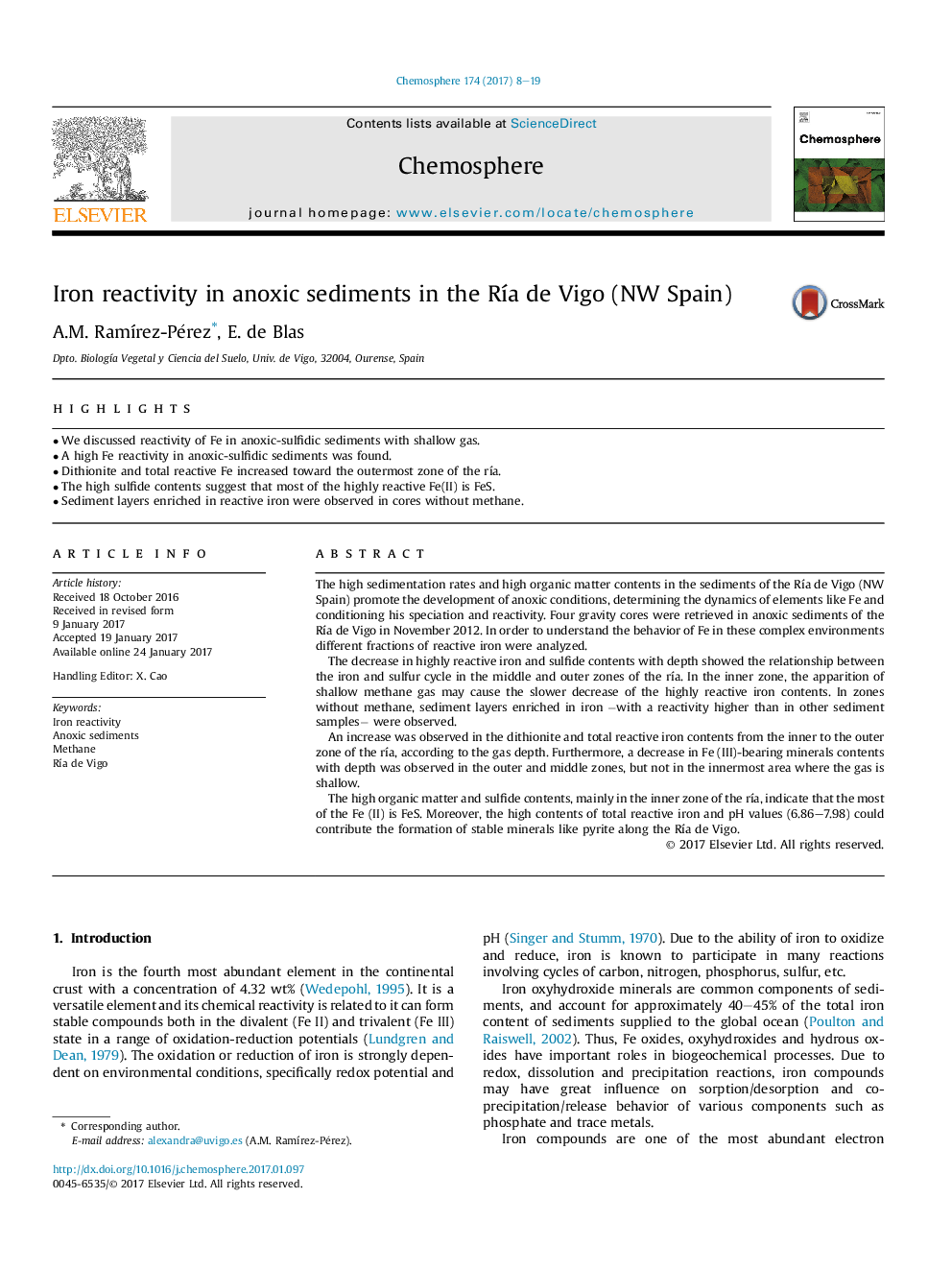| کد مقاله | کد نشریه | سال انتشار | مقاله انگلیسی | نسخه تمام متن |
|---|---|---|---|---|
| 5747284 | 1618797 | 2017 | 12 صفحه PDF | دانلود رایگان |

- We discussed reactivity of Fe in anoxic-sulfidic sediments with shallow gas.
- A high Fe reactivity in anoxic-sulfidic sediments was found.
- Dithionite and total reactive Fe increased toward the outermost zone of the rÃa.
- The high sulfide contents suggest that most of the highly reactive Fe(II) is FeS.
- Sediment layers enriched in reactive iron were observed in cores without methane.
The high sedimentation rates and high organic matter contents in the sediments of the RÃa de Vigo (NW Spain) promote the development of anoxic conditions, determining the dynamics of elements like Fe and conditioning his speciation and reactivity. Four gravity cores were retrieved in anoxic sediments of the RÃa de Vigo in November 2012. In order to understand the behavior of Fe in these complex environments different fractions of reactive iron were analyzed.The decrease in highly reactive iron and sulfide contents with depth showed the relationship between the iron and sulfur cycle in the middle and outer zones of the rÃa. In the inner zone, the apparition of shallow methane gas may cause the slower decrease of the highly reactive iron contents. In zones without methane, sediment layers enriched in iron âwith a reactivity higher than in other sediment samplesâ were observed.An increase was observed in the dithionite and total reactive iron contents from the inner to the outer zone of the rÃa, according to the gas depth. Furthermore, a decrease in Fe (III)-bearing minerals contents with depth was observed in the outer and middle zones, but not in the innermost area where the gas is shallow.The high organic matter and sulfide contents, mainly in the inner zone of the rÃa, indicate that the most of the Fe (II) is FeS. Moreover, the high contents of total reactive iron and pH values (6.86-7.98) could contribute the formation of stable minerals like pyrite along the RÃa de Vigo.
Journal: Chemosphere - Volume 174, May 2017, Pages 8-19